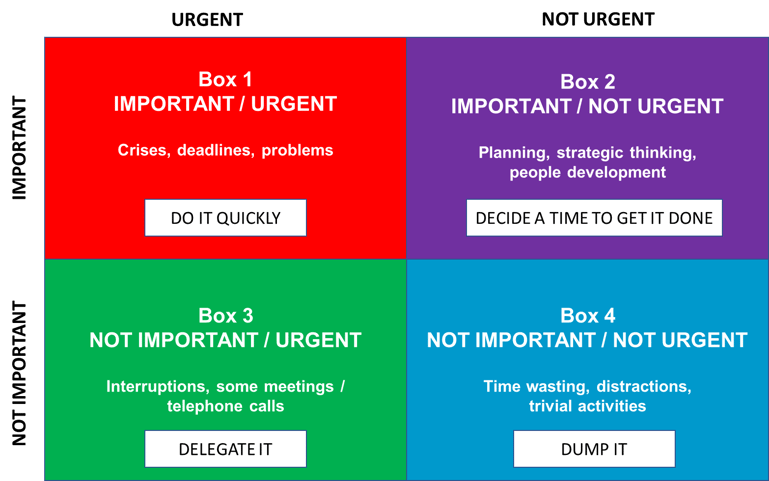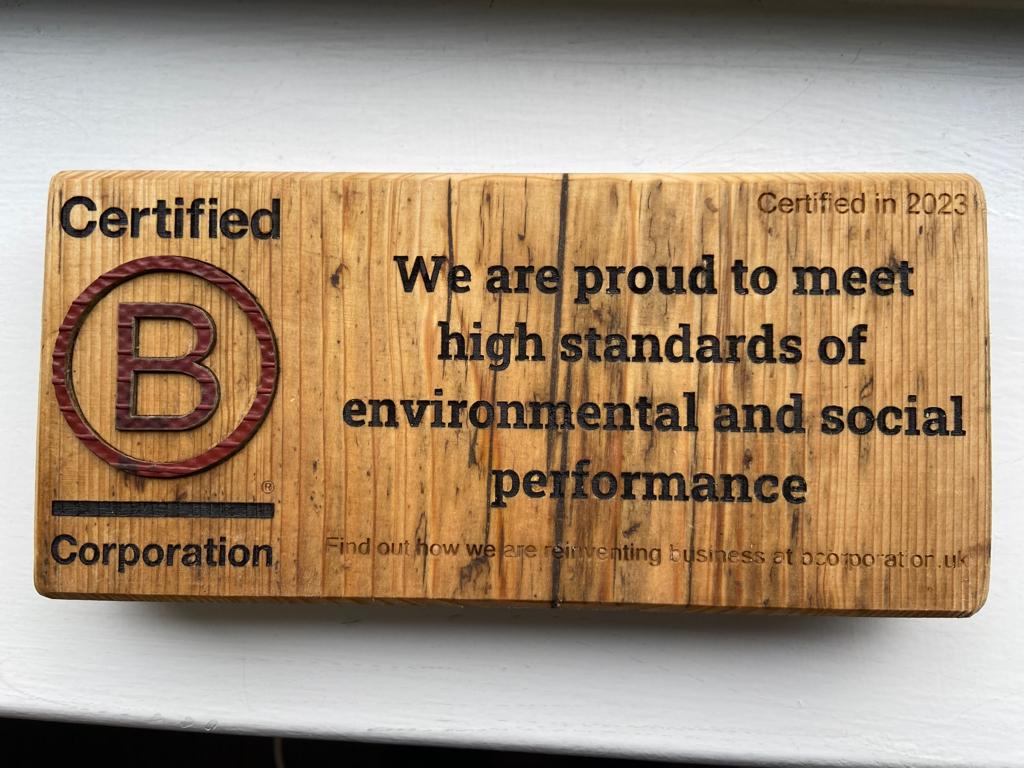Proven techniques to help you to effectively prioritize and manage your time
Does it feel like you are always in reactive mode, responding to crises, problems and issues and that you are not in control of your day?
If the answer is yes, then rest assured that you are not alone. We see the impact first hand on our leadership and management programs with leaders and managers feeling that they do not have enough hours in the day to get everything done. They are spending too much time working ‘in’ the business rather than working ‘on’ the business.
We suggest that the solution lies in a prioritisation / decision making tool that was popularized by Stephen Covey, author of The Seven Habits of Highly Effective People, the Urgent – Important Matrix. By using Covey’s matrix (see below) you can more effectively prioritize your tasks and responsibilities.
Dwight Eisenhower, former US President and commanding General during World War Two was guided by the principle that tasks are either urgent or important:
“What is important is seldom urgent and what is urgent is seldom important.”
Essentially urgent tasks are those which demand our immediate attention – the client who needs a response by lunchtime, a document that has to be submitted by 5pm today, an emergency on site that has to be dealt with. Important tasks tend to be those which contribute to our own goals, tasks and objectives.
Research shows that those in leadership and management roles tend spend a large proportion of their time dealing with urgent issues which are frequently not important which then doesn’t leave them with enough time to deal with the important, non-urgent tasks such as strategic planning, people development and personal learning.
Have you ever postponed a 1-2-1 meeting with one of your team because something urgent cropped up?
“It’s not urgent, we can catch up next week instead…”
Sometimes those important but not urgent tasks get pushed back and repeatedly delayed until suddenly they are urgent – such as your team member who has been waiting for several months for their 1-2-1 development review with you and has now handed in their notice as they’ve been offered a job at a company with better career opportunities.
Let’s look at how the Urgent-Important matrix can help:

Box 1 tasks – Urgent and Important
These tasks need to be done quickly. It is unrealistic to expect that problems and issues will not arise, so make sure that you have allowed enough time in the day to deal with Box 1 tasks.
Box 3 tasks – Urgent and Not important
These tasks also need to be dealt with now as they are urgent, but they tend to be important to someone else rather than helping you to achieve your own tasks. Box 3 tasks would include colleagues asking for information that someone else in the team could have provided or direct reports phoning to ask questions that they often know the answer to already. When team members are new, lack experience or are not performing to an acceptable standard, you will obviously need to provide more direction. However, when they are clearly competent in a particular task, how can you build their confidence and empower them to make decisions themselves? In this way, many Box 3 tasks can be delegated to others.
Box 4 tasks – Not Urgent and Not Important
Tasks in this box are often fun distractions but are a complete waste of your time. For example, one of your objectives may require you to schedule the social media posts for your business, but spending an hour scrolling through the Twitter news feed was neither urgent nor important. Be honest with yourself when you are spending time in Box 4 and stop doing it! This will then free up time to focus on other more important or urgent tasks.
Box 2 tasks – Important but not urgent
These tasks often don’t have a set deadline – people development, relationship building, strategic thinking, personal learning goals. Because they are not urgent, they can often sit on our ‘to-do’ list for weeks or months whilst we procrastinate and spend our time focusing on urgent or non-important tasks. However, at some point, these tasks will become urgent or may never get to the top of your list and get done.
Professor John Oliver OBE led the business and cultural transformation at Leyland Truck when he was CEO. He is also a regular speaker on our LEAD™ and GAIN™ leadership and innovation programs and his work has inspired the creation of the Quick Win projects that aspiring managers work on during LEADlight.
John promotes the 70/30 rule and advocates that high performing leaders should spend 70% of their time on culture, strategy, employee engagement, reflection and ideas (i.e. Box 2 activities) and 30% of their time on systems, procedures and actions – the everyday management in other words.
By using this matrix, you can make sure that you quickly do the necessary tasks in Box 1, delegate / empower others to deal with Box 3 issues, stop wasting your time in Box 4 and you can then focus your attention on the important activities in Box 2.
Next steps
Over the next week, make a note of how and where you spend your time. Which quadrant do you spend most of your time in? What steps can you then take to ensure that you spend more time working ‘on’ the business rather than ‘in’ it?
On our programs, we help leaders and managers to identify how they can more effectively manage their time. To learn more click here.
The QuoLux™ Blog brings leading insights to business leaders and managers, with models, tools and techniques that stimulate thinking and provide practical, actionable and valuable approaches. Topics include leadership, management, strategy, leading change, leading teams, employee engagement, Good Dividends and many more. Make it easy for yourself and subscribe to ensure you receive FREE articles like these.




